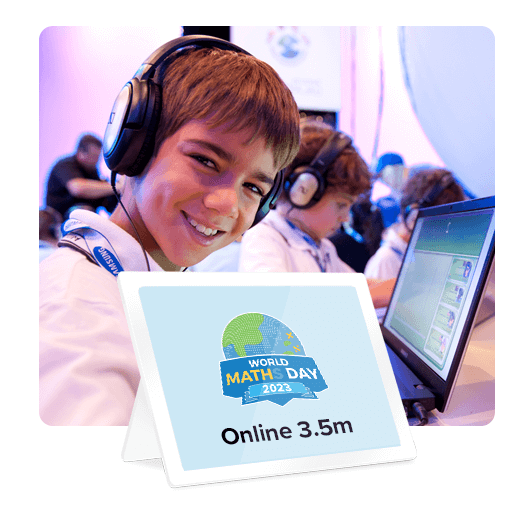
When they don’t have manipulatives or working-out paper on hand, students need to be comfortable doing basic math in their heads.
Fortunately, any child can do it provided they know the right tips and tricks.
Here are six mental math strategies to teach your students. You’ll give them the confidence to put their calculator away and start solving problems under their own steam!
1. Rounding up to the nearest ten
Working in lots of 10 makes addition and subtraction that much easier, because there’s no borrowing or carrying required. Students can make the most of this by rounding up the numbers in a sum to the nearest 10.
The trick is to save the “extra” numbers used for the rounding, and then subtract them at the end. Model this to your students with a number talk. For example, if the sum is 57 + 48, your thought process might be:
- I’ll round up those numbers to 60 + 50, because that’s easier to add.
- But I’ll keep in mind that I’ve given myself an extra 5 for the round up (3 to turn 57 into 60, and an extra 2 to turn 48 into 50). I’ll have to subtract that 5 from my final answer when I get there.
- My rounded-up sum: 60 + 40 = 110.
- Minus the 5 = 105.
2. Work from left to right
On paper, we teach students to solve multiple digit sums from right to left, starting with the ones and borrowing/regrouping as required.
But if they’re doing them mentally, they can work the other way around and not worry about keeping track of the borrowing and regrouping. Let’s take 34 + 17 as an example:
- First we add the 3 and 4 in the tens column, giving us 40.
- Now we add the 4 and 7 in the ones column, giving us 11.
- Add the 11 to the 40, and we get a total of 51.
3. Use multiplication hacks
Memorizing multiplication tables is a mental math hurdle for most elementary learners, but it becomes a whole lot easier once they memorize the following ‘hacks’:
- Any number times 1 remains the same.
- Any number times 10 has a zero added to its end.
- Any number up to 9 times 11 is just the same digit repeated twice (e.g. 99).
Together, these hacks instantly give students 60 multiplication facts that can be calculated automatically – without any need for memorizing.

Put your students’ skills to the test and take part in World Maths Day, the world’s largest online mathematics competition.
4. Bump the decimal over to easily find a percentage
Figuring out a 10% tip in a restaurant is one of the most-cited mental math problems. Fortunately, there’s a cheat for it that’s easy to remember.
All students need to do is move the decimal point back one place, with the result being exactly 10% of the original amount. So $25 becomes $2.50, and $7.50 becomes 75 cents.
Once they’ve got the hang of it, students can use lots of 10% to quickly calculate other percentages, too. They only need to double it to find 20% or halve it for 5%. Add those two together and they’ll have 25%.
Retail therapy suddenly gets a whole lot easier!
5. Make guesstimates
In everyday life, mental math rarely needs to be 100% accurate. If it does, we’ll usually reach for a calculator or piece of paper anyway.
Tell your students that it’s OK to approach a more complex mental math problem by “guesstimating” the answer.
This might mean just working with the highest place values in the sum and using this to calculate that the answer will be “around” a certain number. They can then check the answer via working out.
6. Break down the problem
Looking at some of these mental math strategies, you might be wondering why they seem to employ so many more steps than a textbook approach. Wouldn’t this make things more confusing when students work it out in their heads?
In fact, the opposite is true. Instead of jumping to a final solution, students will have much more success if they break a bigger problem into a series of smaller ones, and then move through these systematically.
Remember, it’s unlikely that this process will come naturally for everyone. The best way to teach it is by modeling a number talk as you yourself move through a problem. Think aloud and explicitly call attention to each of the steps you go through to reach a final solution.
Tip: practice this for yourself before you model to the class. A lot of the mental moves you make might be so intuitive and fast paced (you are a math teacher after all) that you won’t even recognize them until you slow down and take notes!
Sharpen your students’ mental math
Our range of online math learning programs have been pedagogically designed to hone mental math and fact fluency through fun activities such as live competitions and fast-paced games. Sign up for a free trial and find out why they’re loved by 5 million students worldwide.










